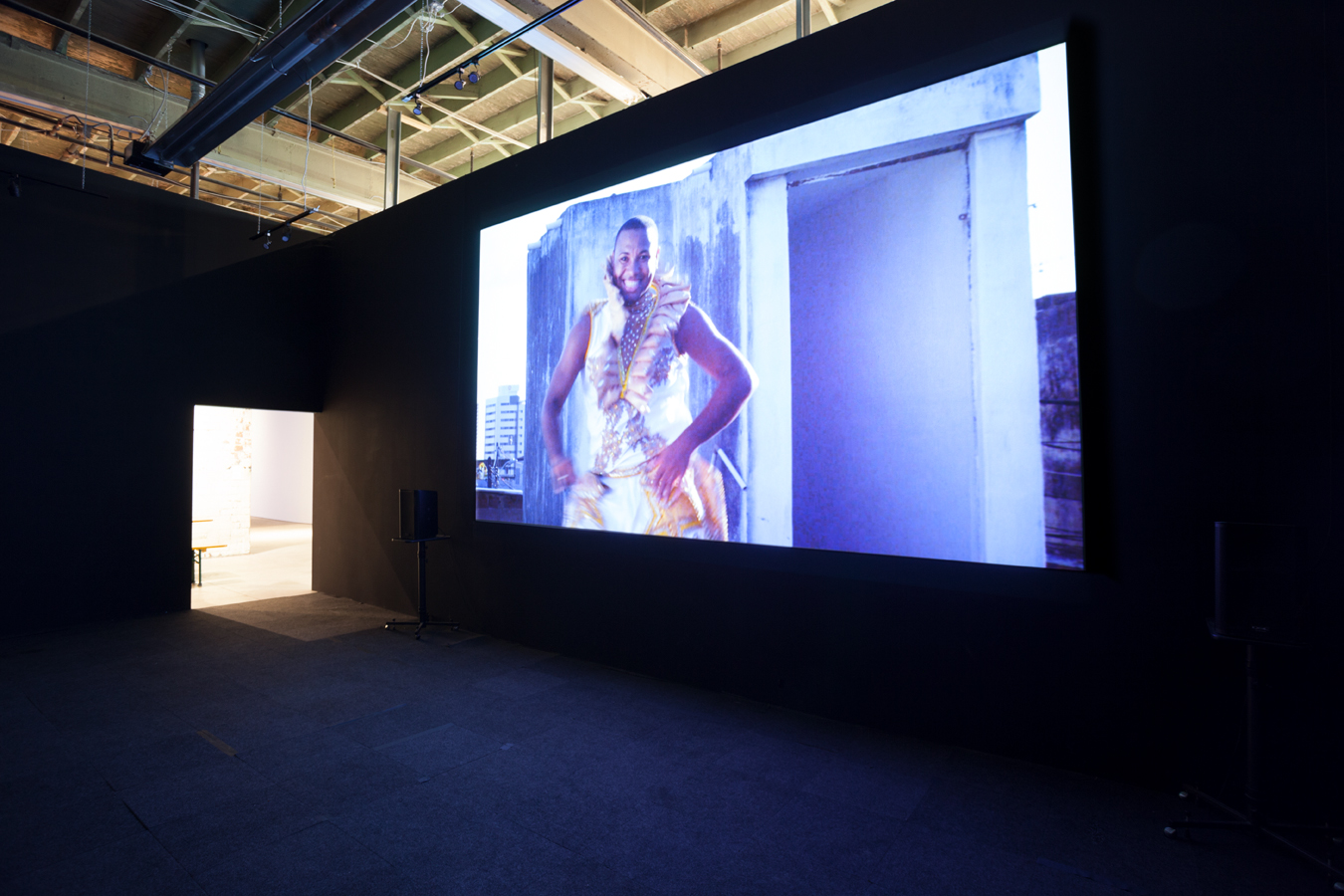ASPIRATIONS

ASPIRATIONS is the first-ever museum exhibition devoted to the collaborative films of Bárbara Wagner (1980, Brasilia) and Benjamin de Búrca (1975, Munich). Their collaborative work explores layers of identity created through symbolic gestures, and addresses the intersections of gender, class, race, and religion as expressed through movement, costume, dance, and worship.
PAST EXHIBITIONS
ASPIRATIONS
MAY 19 – AUGUST 27, 2017
ASPIRATIONS is the first-ever museum exhibition devoted to the collaborative films of Bárbara Wagner (1980, Brasilia) and Benjamin de Búrca (1975, Munich). Their collaborative work explores layers of identity created through symbolic gestures, and addresses the intersections of gender, class, race, and religion as expressed through movement, costume, dance, and worship. The films document shared cultural expressions—from music to dance, spiritual practice to urban nightlife—to interrogate the complexities of identity, the fantasies of our ideal selves, and the labor of moving between reality and an aspirational ideal. The three films presented at MOCAD each examine questions of performance and authenticity via contemporary Brazilian cultural forms.
In Faz Que Vai (Set to Go, 2016) we first meet a pink-clad drag dancer, complete with tiara, long blonde wig, and decadent amounts of makeup. With each stomp of her scepter, our dancer appears to double and yet morph alongside her own constructed figure. Shedding layers of costume—or rather, exchanging one costume for another—the dancer transforms from female into male, exposing and making parallel the performative nature not only of dance but also gender. In subsequent segments, we see different men performing the Brazilian frevo dance style, moving to the percussive beats of the Bomba do Hemetério Popular Orchestra. Each dancer directs flirtatious glances to the camera, seemingly inviting intimate connections with the video’s viewers. The film effectively challenges typical expectations of movement and masculinity, gesture and gender, as it celebrates the dancers’ spontaneous and vivacious movements.
Estás Vendo Coisas (You Are Seeing Things, 2017) examines the commercial culture of brega music in Recife. Brega emerged in the 1960s, and while some consider it tacky, a celebration of romance and bad taste, it remains extremely popular. Following two real-life, aspiring brega musicians—MC Porck and Dayana Paixão—Wagner and de Búrca’s film views these characters in and out of performance contexts, uncovering a complicated mix of alternately hidden and revealed identities. With our protagonists’ music providing the soundtrack, several vignettes portray the musicians in and out of costume, onstage and off. What emerges are the conflicted ways in which MC Porck and Dayana Paixão shape and change their personas as well as stark contrasts between the music’s romanticism and the industry’s obvious commercialism.
Terremoto Santo (Holy Tremor, 2017) addresses a growing evangelical movement in Brazil’s Pernambuco region. Venturing this time outside of the state’s capital city and into the rural areas, the film considers this zealous new religious crusade through its dramatic performative gestures. Music, here again, plays an important role, as Brazilian gospel music supplies a soundtrack that contextualizes and conveys the emotional pitch of the evangelical experience. And, through focusing on the young musicians, preachers, singers, and producers involved in the religious movement, the film also presents an economic story—the flip side of evangelism as entrepreneurship.

